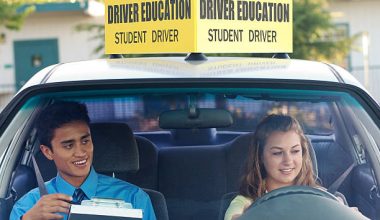Effective school principals must put in a lot of effort and study. The tasks of a school principal extend far beyond applying sanctions for unruly student behavior.
More so, it is expected of every educational sector to improve the duties or responsibilities of a school principal.
The leadership of school principals helps in maintaining a serene academical environment.

They establish and manage academic objectives and guarantee that instructors have the tools and resources necessary to achieve them.
This post is centered on answering frequently asked questions like Who is The Boss of a School Principal?
Table of Contents
- What is The Meaning of a School Principal?
- School Principal Duties
- The different Types of School principal
- Principal of a School Spelling
- Vision of a School Principal
- Principal Duties Generally Consist of:
- School Principal Salary in the US
- The How To Become a School Principal
- FAQs
- Conclusion
- References
- Recommended Posts
What is The Meaning of a School Principal?
The person in charge of running a school’s daily operations and maintaining its numerous systems is called the principal.
Principals answer directly to their local superintendent, who is their superior.
Vice principals frequently work alongside principals to help them with their duties.
Principals typically earn a much higher income due to their extensive responsibility and workload. Principals are expected to do a range of tasks, including the creation of educational standards, regulations, and procedures for the school.
They are typically very disciplined people. They also keep an eye on and assess the performance of the staff members working in their particular educational facility.
School Principal Duties
Depending on the size and nature of the school they oversee, a school principal’s duties and responsibilities can vary, but generally speaking, they consist of the following:
Leadership
A school’s principal sets the tone and direction for accomplishing academic and organizational objectives by providing visionary leadership. They are in charge of creating and putting into action policies, programs, and initiatives that support learning and the general wellbeing of students.
Administration
A principle is in charge of running the daily affairs of the school, which includes setting the budget, selecting and evaluating staff members, and managing teachers and other staff. Additionally, they guarantee that the institution complies with all statutory and regulatory standards.
Curriculum
The school’s curriculum is developed and implemented under the direction of the principal, who also ensures that it complies with local, state, and federal criteria and is compatible with the institution’s aims. To create educational strategies that cater to the various requirements of pupils, they collaborate with teachers.
Discipline
A principal is in charge of preserving a secure and orderly learning environment, which includes upholding school rules and regulations, handling disciplinary matters, and attending to emergencies or crises.
A principal acts as a liaison between the school and the community by talking to parents, students, and other interested parties about the programs, policies, and activities of the school. They collaborate with neighborhood organizations to advance the mission and objectives of the school.
Professional Development
A principle is in charge of assisting in the growth and learning of teachers and staff members, fostering a climate of continual improvement, and giving chances for growth.
Support for Students and Staff
A principal is in charge of making sure that students and staff have the assistance they require to succeed.
This entails offering tools, programs, and services that advance student wellbeing in addition to building a supportive and cooperative work environment for employees.
These are Most Important Duties a Principal Performs in the school.
The different Types of School principal
There are different categories of school principals, and each has particular duties and areas of emphasis. Here are a few illustrations:
#1. Elementary School principal
An elementary school principal is in charge of ensuring the academic progress and general welfare of pupils in grades K–5.
They often work with fewer students and are committed to provide young children with a secure, supportive, and interesting learning environment.
#2. Middle School Principal:
In charge of managing a larger student body and a more varied curriculum, the middle school principal leads pupils in grades 6 through 8.
To meet the social, emotional, and academic requirements of teenagers, they must also collaborate closely with teachers.
Read Related Article: Can You Get Your High School Diploma Online For Free
#3. High School Administrator
The duties of a high school administrator include overseeing a larger student body, a broader range of academic topics, and a more complex range of extracurricular activities.
Additionally, they must guarantee that students are ready for post-secondary education, a career, and life.
#4. Assistant Principle
An assistant principle is a member of the administrative staff who supports the principal and may be in charge of the curriculum, student services, or discipline. They might also act as a point of contact between the school and other organizations.
#5. High School Administrator
The duties of a high school administrator include overseeing a larger student body, a broader range of academic topics, and a more complex range of extracurricular activities. Additionally, they must guarantee that students are ready for post-secondary education, a career, and life.
#6. Director of Alternative Education
Programs for kids who may have had difficulty in standard school settings, such as those who have been expelled or have behavioral concerns, are overseen by an alternative education principal.
They strive to develop a nurturing and stimulating learning environment that caters to the particular requirements of these pupils.
Principal of a School Spelling
Although the both spelling sound and appear alike, the terms principal and principle mean different things. Principle is a noun, whereas principal can be either an adjective or a noun. Principal is a noun that typically refers to the main or head individual, such as the principal of a school.
Vision of a School Principal
The vision of a principal reflects the future they want, the standards they, their leaders, and staff live by, as well as each of their roles in the transformation process.
Staff members are held to reasonable standards and expectations when a vision for a more positive school culture is developed and communicated.
Mission
To give every student a diverse education that encourages self-discipline, a sense of responsibility, social and global awareness, and excellence in learning.
School Principal Vision
To develop a teaching and learning environment rich with intentional and purposeful experience to draw out the best.
The school curriculum aims to attain excellence in academic and extracurricular pursuits to develop each student’s personality as a whole, their moral life, beliefs, compassion, and self-efficacy to help them become better human beings.
The school motto, “Making Life Meaningful,” takes on even more significance in keeping up with the pace of the 21st century because of the school’s expanding function as the nexus of societal change and as a cradle of genesis for initiatives as well as nation-building.
Use your imagination wisely. Have faith in oneself. It is the secret of remaining true to oneself even after overcoming life’s challenges and even the test of time.
Principal Duties Generally Consist of:
Establishing goals for students’ and teachers’ performance
Putting in place and maintaining school regulations and safety procedures
A summary of administrative responsibilities, such as updating employee records
Adapt these duties to your own requirements while creating your own job description for the school principal.
Principal Responsibilities Are:
- Oversee daily activities at the school budgets and logistics for the school
- Depending on the national curriculum, establish learning objectives for both students and teachers.
- Keep track of and reporte on teacher’s performance presenting information to the board.
- Recruiting and hiring school employees
- Review and put in place school regulations
- Deal with emergencies and school crises by offering teachers assistance.
- Plan school activities and assemblies.
- Maintain a clean and safe atmosphere for the pupils (for example, by enforcing hygiene norms)
- Attend conferences to learn about the most recent developments in education.
School Principal Skills Requirement
Experience as a principal or in a position similar to it in the past Understanding of school administration procedures and federal educational regulations
MS Office and education management system practical experience
Observation of details
excellent communication and presenting abilities
crisis intervention
Ability to mentor and motivate
Preferably, you have a teaching license.
Educator’s degree; a master’s degree is preferred.
School Principal Salary in the US
As of March 28, 2023, the average School Principal pay in the United States is $115,104; however, the normal salary range is between $101,667 and $129,490.
Salary ranges can vary significantly depending on a variety of crucial aspects, including schooling, credentials, supplementary talents, and the length of time you’ve been working in a given field.
Salary.com assists you in determining your precise pay target by providing more online, real-time compensation data than any other website.
The How To Become a School Principal
One of the most crucial roles in educational administration is that ofbeing the principal of a school. Elementary, middle, and high school operations are under the principals.
To give pupils the greatest education possible entails working with parents, teachers, and community leaders, managing the budget and grant applications.
They are essential in mentoring students, helping teachers develop as teachers.
Although most school principals start as teachers before transitioning to administrative roles. Here is a step-by-step manual to help you get there.
Read Also: Highland high school reviews 2022| Admission, requirements, Academics, Scholarships
#1. Earn a Bachelor’s Degree
To become a school principal, you must first earn your bachelor’s degree.1 Bachelor in education is the most popular degree obtained by those planning to become teachers and, eventually, school principals or administrators.
You might pursue a degree in English, math, or a different subject that interests you as a teacher.
Before transitioning to administrative positions, most people spend a few years teaching, and some states demand that applicants have a certain amount of teaching experience.
But there are other ways to get the experience required to become a principal. You can also acquire the necessary abilities through school counseling and related positions in educational environments.
The secret is to pick an undergraduate degree program that fits your skills and the job you want to land after graduation.
#2. Obtain a Teaching Credential.
Each public school teacher must possess a certificate, often known as a license, each state has different criteria.
It could be advisable to apply for jobs first, then fulfill any criteria to earn your license in the state where your hired, if you want to apply for teaching jobs in numerous states.
The Education Commission of the States provides information on state licensing requirements, connections to each state commission, and details on teacher certification reciprocity.
#3. Obtain Work Experience in Academics.
Even in states where it is not necessary to have teaching experience to become a principal, it may still be a good idea.
In obtaining more experience before starting a teaching profession, several states permit you to work as a substitute teacher while enrolled in your undergraduate program.
Substitute teaching can help you get post-graduate experience and improve your organizational, communication, and classroom management abilities if you find employment as a teacher.
Read Related Artitcle: What is it like to attend Hunter College High School? Best Advice
#4. Try an obtain a Masters Degree in Education
Each administrator at public and private schools across the United States must have a graduate degree, or it is strongly preferred. An education master’s degree develops abilities in:
- Evaluating the ability of other teachers
- Assisting teachers in their classroom instruction
- Directing and controlling a school
- Interacting with both parents and students
- Addressing legal difficulties
- Budgeting effectively and looking for funding opportunities
- Hiring and supervising employees and teachers
- Acquiring cross-cultural competence to teach in many contexts.
- Master’s program can range from two to three years, depending on the curriculum and the rate at which each student moves through it.
- Students can continue their professional responsibilities while gaining more teaching experience and training to become principals through online master’s degrees.
You must complete in-person or online classroom training. Many schools additionally demand that you complete an internship, where you’ll work alongside administrators to discover the responsibilities of a principal.
#5. Spread Out Your Knowledge and Experience
Although it can be beneficial, having experience in the classroom is by no means the only need for becoming a principal. At a school, principals have a variety of functions, it’s critical to discover strategies to foster:
Student-centered perspective
Understanding of present and anticipated educational developments A desire for Lifelong learning
Relational interaction
Capacity for leadership, organization, and problem-solving.
During your tenure as a teacher, join committees or assume leadership positions to obtain practical experience in these areas.
#6. Know What Your State Requires
You must hold an active teaching license or certification as a principal, and some jurisdictions demand that principals hold an active teaching licenses for the duration of their principalships.
Before submitting applications, ensure your licenses and certifications are up to date.
#7. Submit a Job Application.
Apply for principalships once you have earned your master’s degree and the necessary experience to demonstrate your qualifications. The Bureau of Labor Statistics predicted that there would be above 283,200 openings for elementary, middle, and high school principals in the U.S. by the end of 2023, with an average annual income of $96,400.5 Given the relative rarity of this type of employment, your credentials can help you stand out from the competition.
FAQs
The principal’s job is to lead, direct, and coordinate activities. The principal goals should be to improve teaching and learning and to create and maintain successful educational programs there.
Develop an image of academic achievement for all kids.
Foster an environment favorable to education.
Feveloping others’ leadership abilities.
Instruction improvement.
Direct individuals, data, and procedures.
According to a study from the Centre for high performance, there are five different “types” of principals: the philosopher, the surgeon, the architect, the soldier, and the accountant. No one wants to be categorized, yet this is how the world works.
The school principal establishes a schedule for the school activities, oversees school programs, and assists instructors, pupils.
Conclusion
Imagine what it would feel like to be called a school principal that is the Boss in charge of the day-to-day school activities. The position of a school principal comes with responsibilities as earlier stated in the above content.
But we believe this article has cleared every doubt and fear of striving to become a school principal.
Take the bold step and apply there is every chance that you can be given the opportunity of becoming the principal of a school. Congratulation in advance on your new position. Cheers.
References
Recommended Posts
- What is Hotel Steward? All You Need to Know in 2023
- 15 Online Schools That Give Refund Checks and Laptops in 2023
- Le Rosey School Reviews
- How Does Crystal Springs Uplands School Middle School and High School Compare to Nueva School, Which has Recently Added a High School?
- How To Become A Certified Aromatherapist In 2023 | Schools, Cost, Job Outlook




